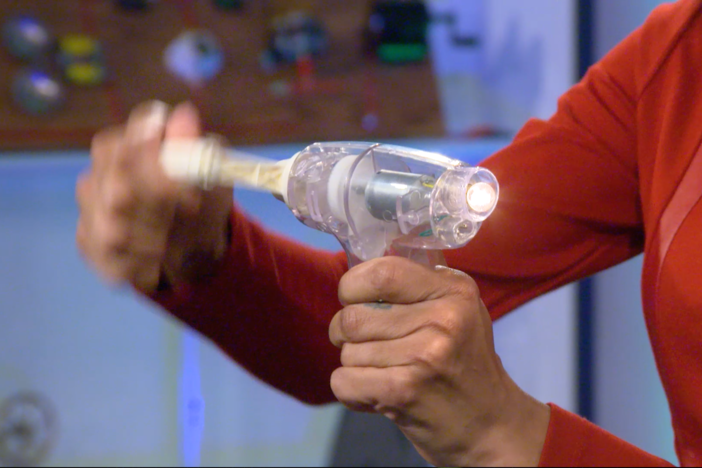Segment G: Spring Potential Energy
We investigate Hooke's Law as we explore the concept of spring potential energy. We also examine how to find this energy mathematically and graphically.
Segment G: Spring Potential Energy
We investigate Hooke's Law as we explore the concept of spring potential energy. We also examine how to find this energy mathematically and graphically.
Science
Obtain, evaluate, and communicate information about the importance of conservation laws for mechanical energy and linear momentum in predicting the behavior of physical systems.
Use mathematics and computational thinking to analyze, evaluate, and apply the principle of conservation of energy and the Work-Kinetic Energy Theorem.
- Calculate the kinetic energy of an object.
- Calculate the amount of work performed by a force on an object.
-Review the concept of spring force and use that knowledge to discuss how it is related to the potential energy stored in a spring.
-Define spring potential energy qualitatively and quantitatively.
-Review the law of conservation of energy and show how spring potential energy relates to it.
-Differentiate between Hookean and non-Hookean springs.
-Students will observe the relationships learned on a spring force versus displacement graph and use it to find spring potential energy.
equilibrium position - an object at its natural position, where it has no tendency to move and the net force acting on it is zero.
Hookean Springs - when the force needed to compress or stretch a spring by a given displacement is linear and abides by Hooke’s Law.
Non-Hookean Springs - when the force needed to compress or stretch a spring by a given displacement is not linear and does not abide by Hooke’s Law.
spring constant (k) - a characteristic of a spring that is equal to the force exerted on it divided by the displacement the spring stretches; the unit is a newton per meter (N/m).
spring force (FS) - this force is equal to the spring constant for a given spring multiplied by the displacement the spring is stretched from the equilibrium position.
spring potential energy (PES) - the amount of stored energy in a spring; is equal to one half times the spring constant times the displacement the spring is stretched from the equilibrium position, squared.
The Physics in Motion teacher toolkit provides instructions and answer keys for study questions, practice problems, labs for all seven units of study. GPB offers the teacher toolkit at no cost to Georgia educators.To order your teacher toolkit, complete and submit this form to request the teacher toolkit. You only need to submit this form one time to get materials for all seven units.








